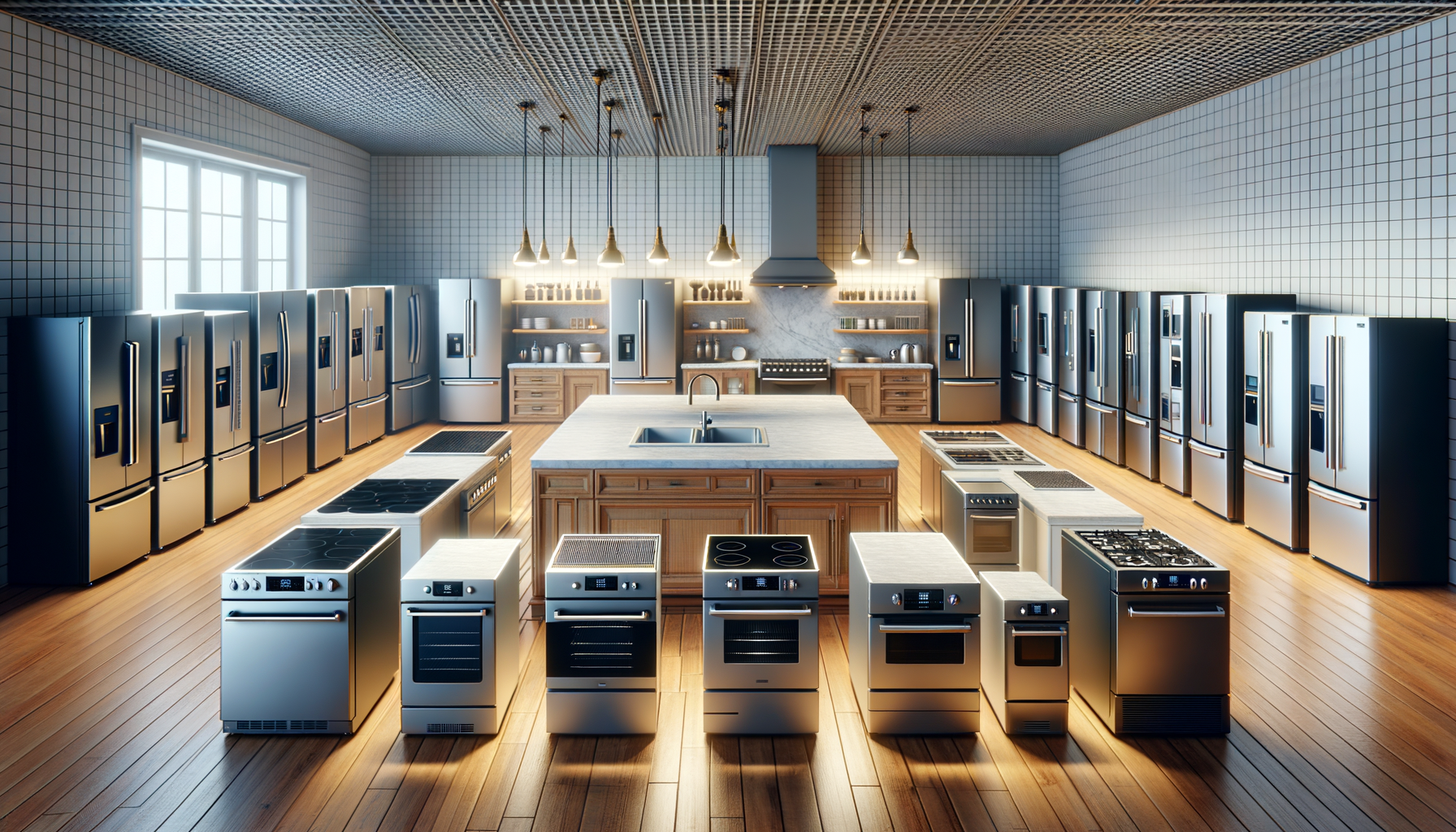Understanding the Types of Refrigerators
Choosing the right refrigerator for your kitchen starts with understanding the different types available. Each type offers unique features and benefits, catering to various needs and preferences. The most common types include top-freezer, bottom-freezer, side-by-side, and French door models.
Top-freezer refrigerators are traditional and often the most affordable. They offer a straightforward design with the freezer compartment located above the refrigerator. These models are typically energy-efficient and provide ample space for both fresh and frozen foods.
Bottom-freezer models, on the other hand, place the refrigerator section at eye level, making it easier to access frequently used items. The freezer is located at the bottom, which may be more convenient for those who use the refrigerator more often than the freezer.
Side-by-side refrigerators feature two vertical compartments, with the freezer on one side and the refrigerator on the other. This design allows easy access to both fresh and frozen foods, though it may offer less space for wider items like pizza boxes.
French door refrigerators combine the benefits of side-by-side and bottom-freezer models. They feature two doors for the refrigerator section and a pull-out freezer drawer. This design is highly popular for its spaciousness and modern aesthetic appeal.
Evaluating Features and Technology
Modern refrigerators come equipped with a variety of features and technologies that enhance functionality and convenience. When evaluating models, consider what features are most important to you and your household.
Energy efficiency is a significant factor, as it can lead to long-term savings on electricity bills. Look for models with the Energy Star label, indicating they meet energy efficiency guidelines set by the U.S. Environmental Protection Agency.
Advanced temperature control is another feature to consider. Some refrigerators offer dual or triple cooling systems that maintain optimal humidity and temperature levels in different compartments, keeping food fresh for longer.
Ice and water dispensers are popular features that provide convenience. However, they can take up space inside the refrigerator and may require additional maintenance.
Smart technology is becoming increasingly common in refrigerators. Features such as touch screens, voice control, and smartphone connectivity allow users to monitor and control their refrigerator remotely, providing added convenience and efficiency.
Assessing Size and Capacity
When selecting a refrigerator, it’s crucial to consider the size and capacity that will best suit your kitchen and lifestyle. The dimensions of the refrigerator should fit comfortably within your kitchen space, allowing for proper ventilation and door clearance.
Measure the available space in your kitchen, including the height, width, and depth, to ensure a proper fit. Keep in mind the clearance needed for the refrigerator doors to open fully, as well as any additional space required for features like ice dispensers or pull-out drawers.
Capacity is equally important, as it determines how much food you can store. Consider the size of your household and your typical grocery shopping habits. A larger family may require a refrigerator with greater capacity, while a smaller household might prefer a more compact model.
Refrigerator capacity is typically measured in cubic feet. As a general guideline, a family of four might need a refrigerator with a capacity of 18 to 20 cubic feet, while larger households may require 22 cubic feet or more.
Considering Design and Aesthetics
The design and aesthetics of a refrigerator can significantly impact the overall look and feel of your kitchen. When selecting a model, consider how it will complement your kitchen’s style and décor.
Refrigerators are available in a variety of finishes, including stainless steel, black stainless, white, and custom panel options. Stainless steel is a popular choice for its sleek, modern appearance and durability, though it may show fingerprints more easily.
Black stainless offers a sophisticated alternative to traditional stainless steel, with a darker, matte finish that resists smudges and fingerprints. White refrigerators provide a classic look that can blend seamlessly with various kitchen styles.
Custom panel options allow you to match the refrigerator to your cabinetry, creating a cohesive, built-in look. This option is ideal for those seeking a seamless integration of appliances into their kitchen design.
In addition to finish, consider the overall design and layout of the refrigerator. Features such as adjustable shelving, door bins, and storage compartments can enhance functionality and make organizing food more efficient.
Budgeting and Making the Final Decision
Budget is a critical factor in choosing a refrigerator. Prices can vary widely depending on the type, features, and brand. It’s essential to determine your budget before shopping to narrow down your options and avoid overspending.
Consider the long-term costs associated with owning a refrigerator, such as energy consumption and maintenance. Investing in an energy-efficient model may cost more upfront but can result in significant savings on electricity bills over time.
When comparing models, take note of warranties and customer reviews. A comprehensive warranty can provide peace of mind, while reviews from other consumers can offer insights into the performance and reliability of a particular model.
Ultimately, the right refrigerator for your kitchen will depend on your specific needs, preferences, and budget. By carefully evaluating the various models and features available, you can make an informed decision that will enhance your kitchen’s functionality and style.








